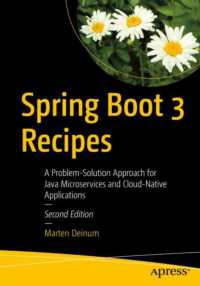- ホーム
- > 洋書
- > 英文書
- > History / World
Full Description
Mandarin Chinese is the most widely spoken language in the world today. In China, a country with a vast array of regional and local vernaculars, how was this "common language" forged? How did people learn to speak Mandarin? And what does a focus on speech instead of script reveal about Chinese language and history?
This book traces the surprising social history of China's spoken standard, from its creation as the national language of the early Republic in 1913 to its journey into postwar Taiwan to its reconfiguration as the common language of the People's Republic after 1949. Janet Y. Chen examines the process of linguistic change from multiple perspectives, emphasizing the experiences of ordinary people. After the fall of the Qing dynasty, a chorus of influential elites promoted the goal of a strong China speaking in one unified voice. Chen explores how this vision fared in practice, showing the complexities of transforming an ideological aspiration into spoken reality. She tracks linguistic change in schools, rural areas, and urban life against the backdrop of war and revolution.
The Sounds of Mandarin draws on a novel aural archive of early twentieth-century sound technology, including phonograph recordings, films, and radio broadcasts. Following the uneven trajectory of standard speech, this book sheds new light on the histories of language, nationalism, and identity in China and Taiwan.
Contents
Acknowledgments
Notes on Language and Transliteration
Introduction
1. Dueling Sounds and Contending Tones
2. In Search of Standard Mandarin
3. The National Language in Exile
4. Taiwan Babel
5. The Common Language of New China
Epilogue
Notes
Bibliography
Index








